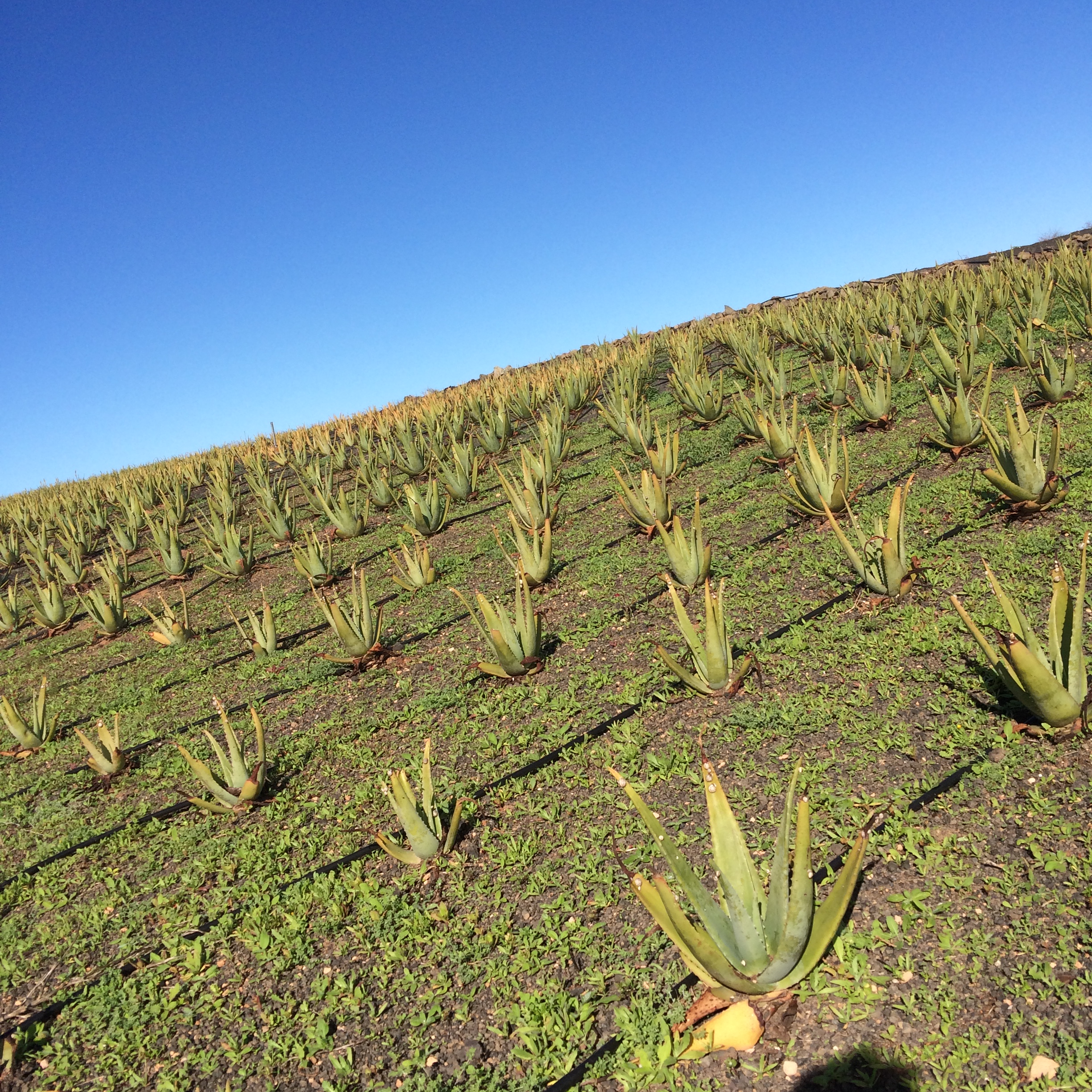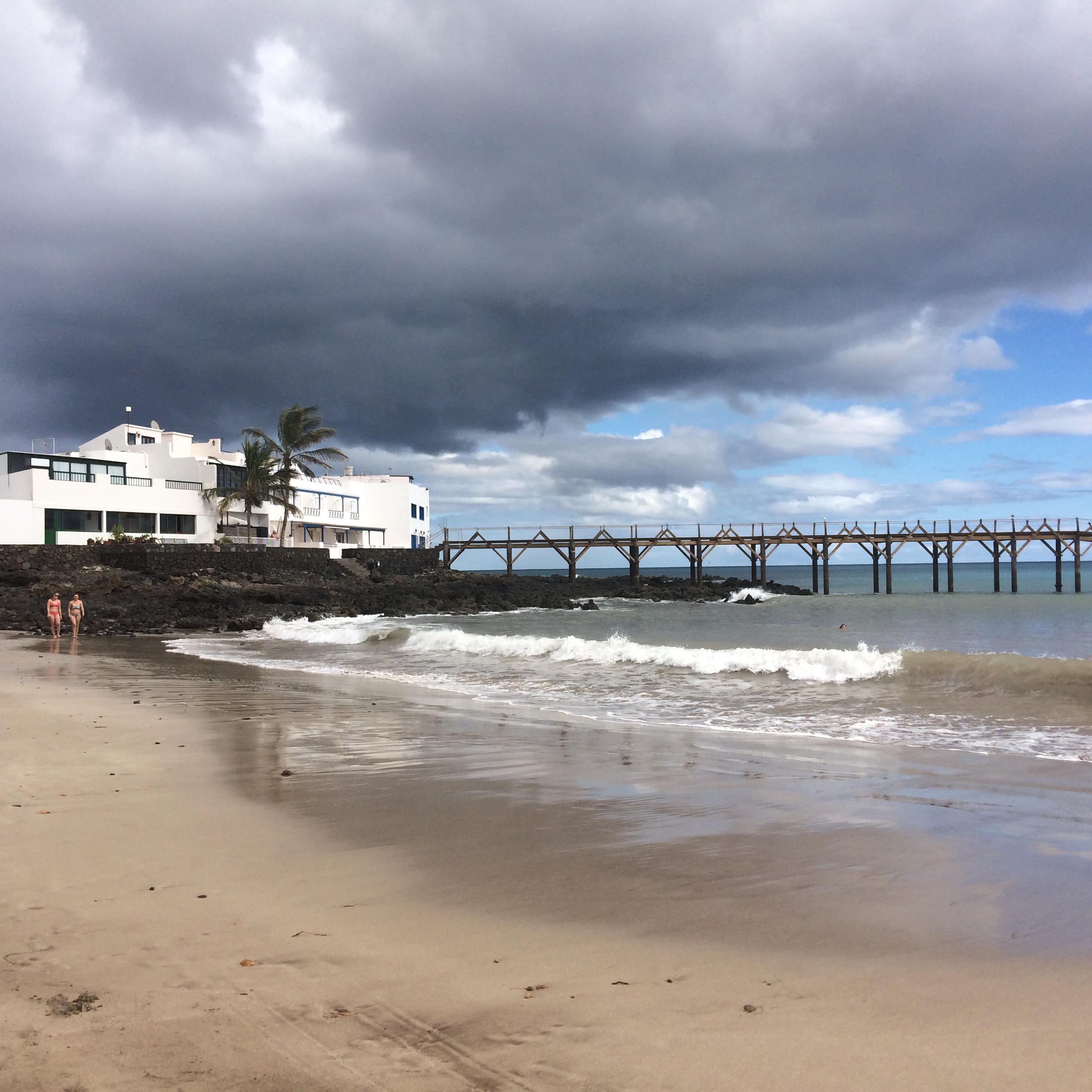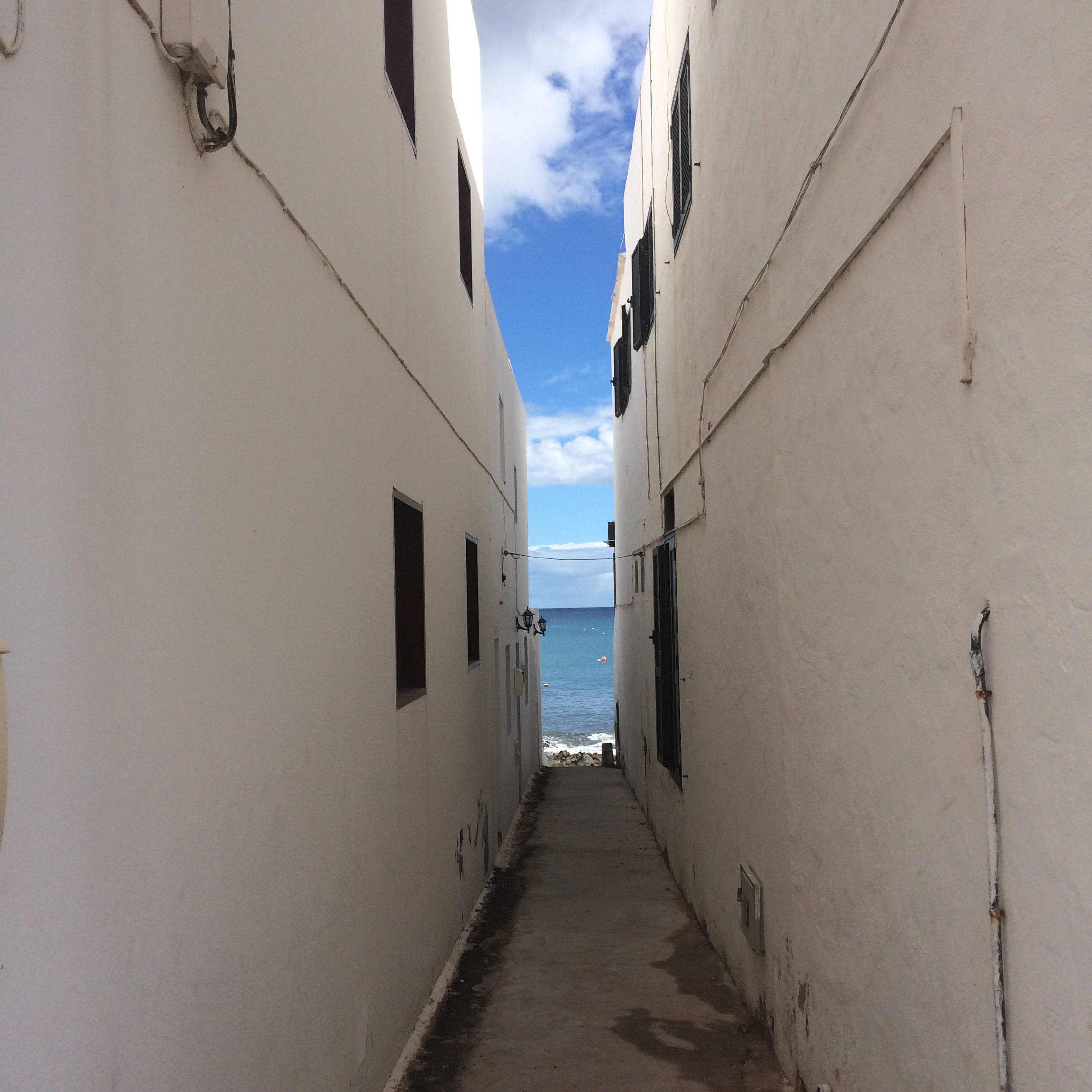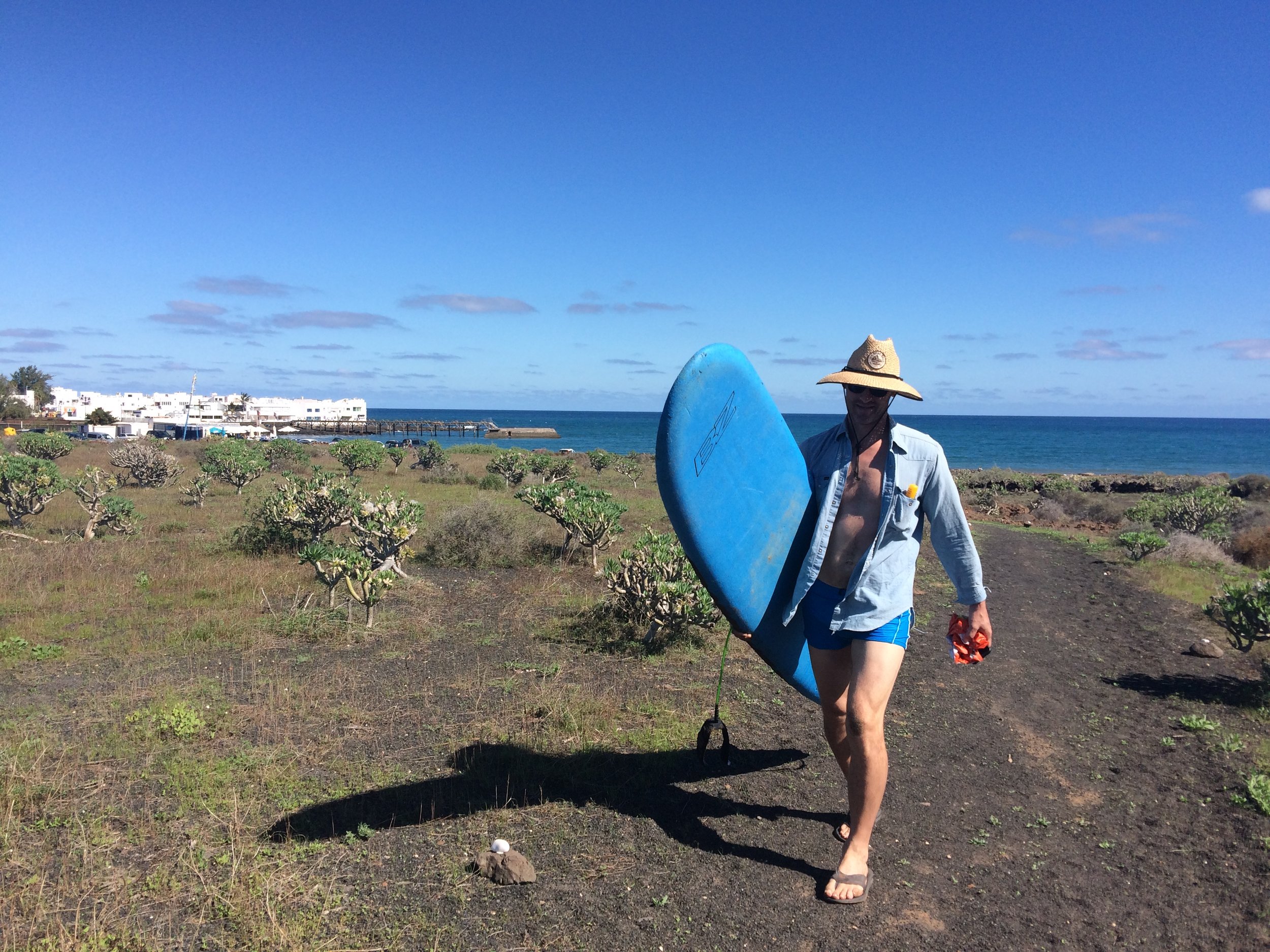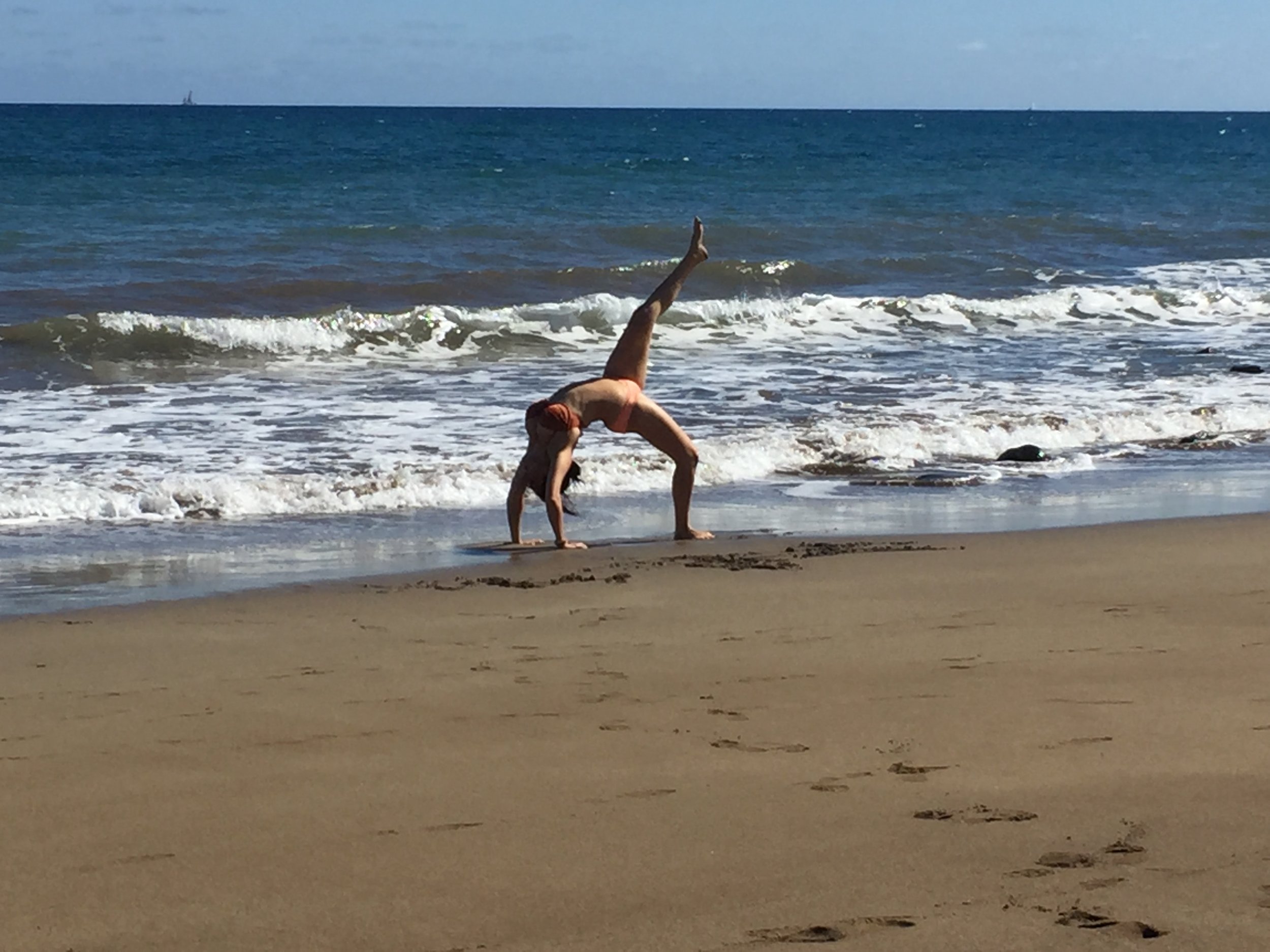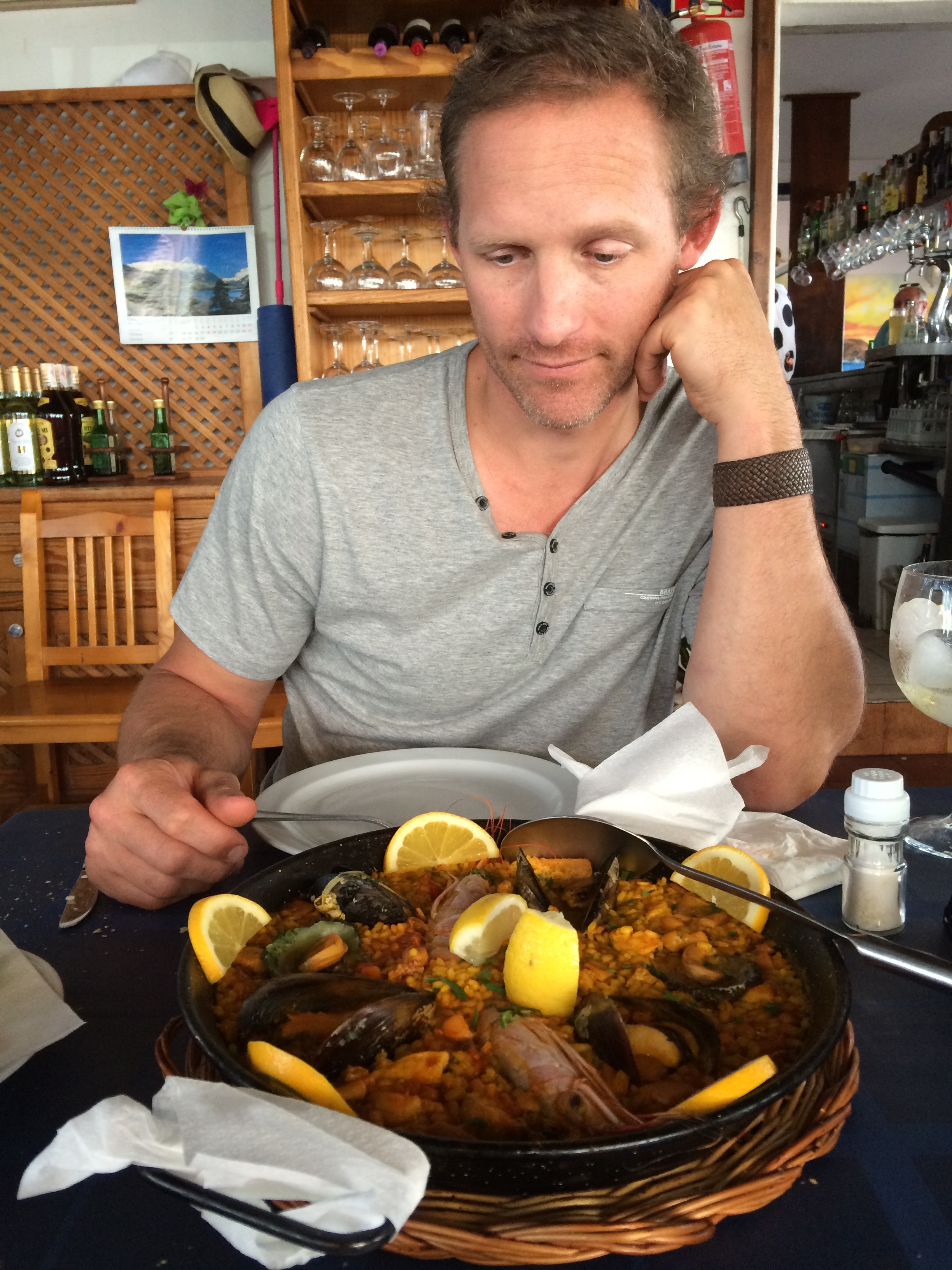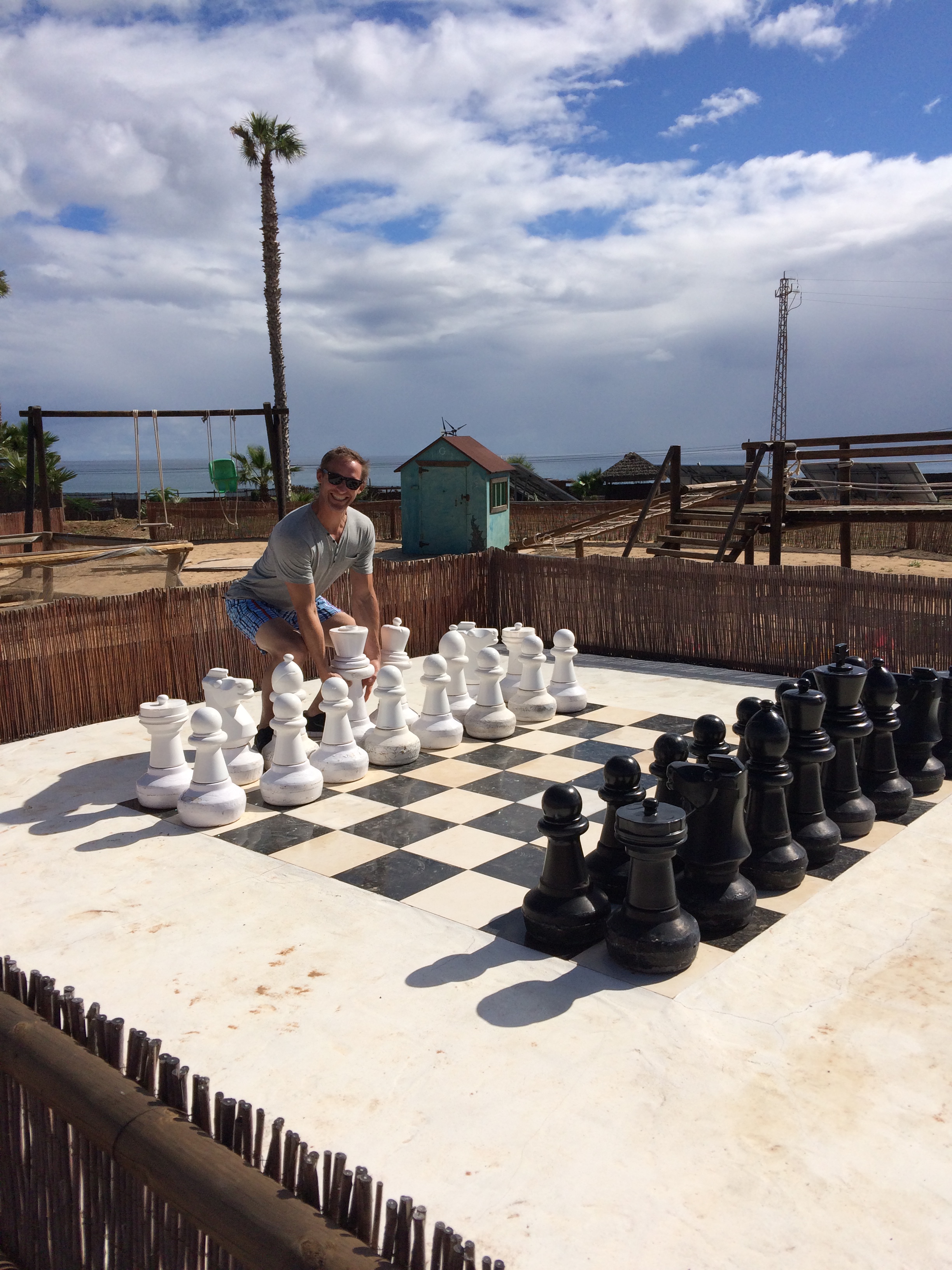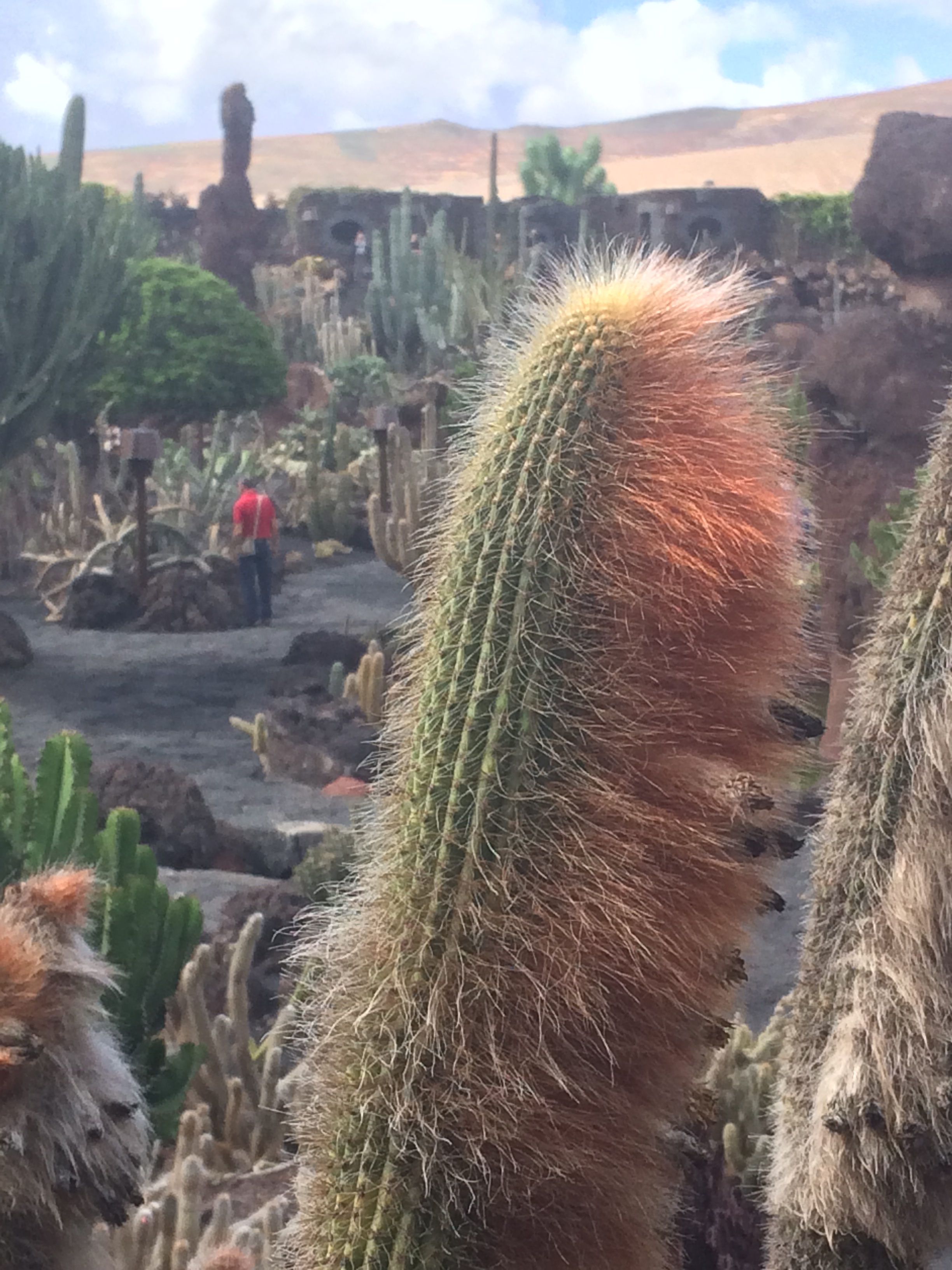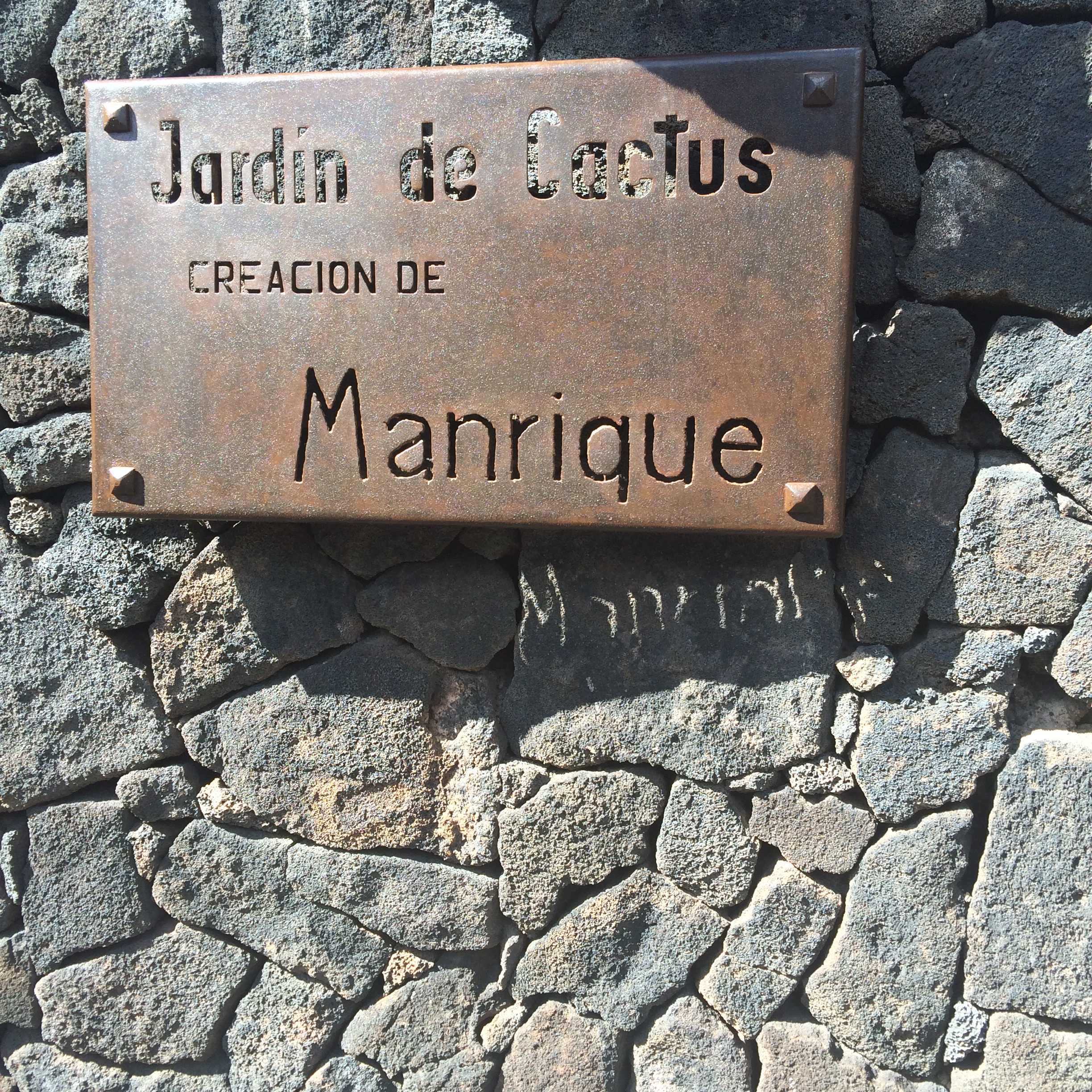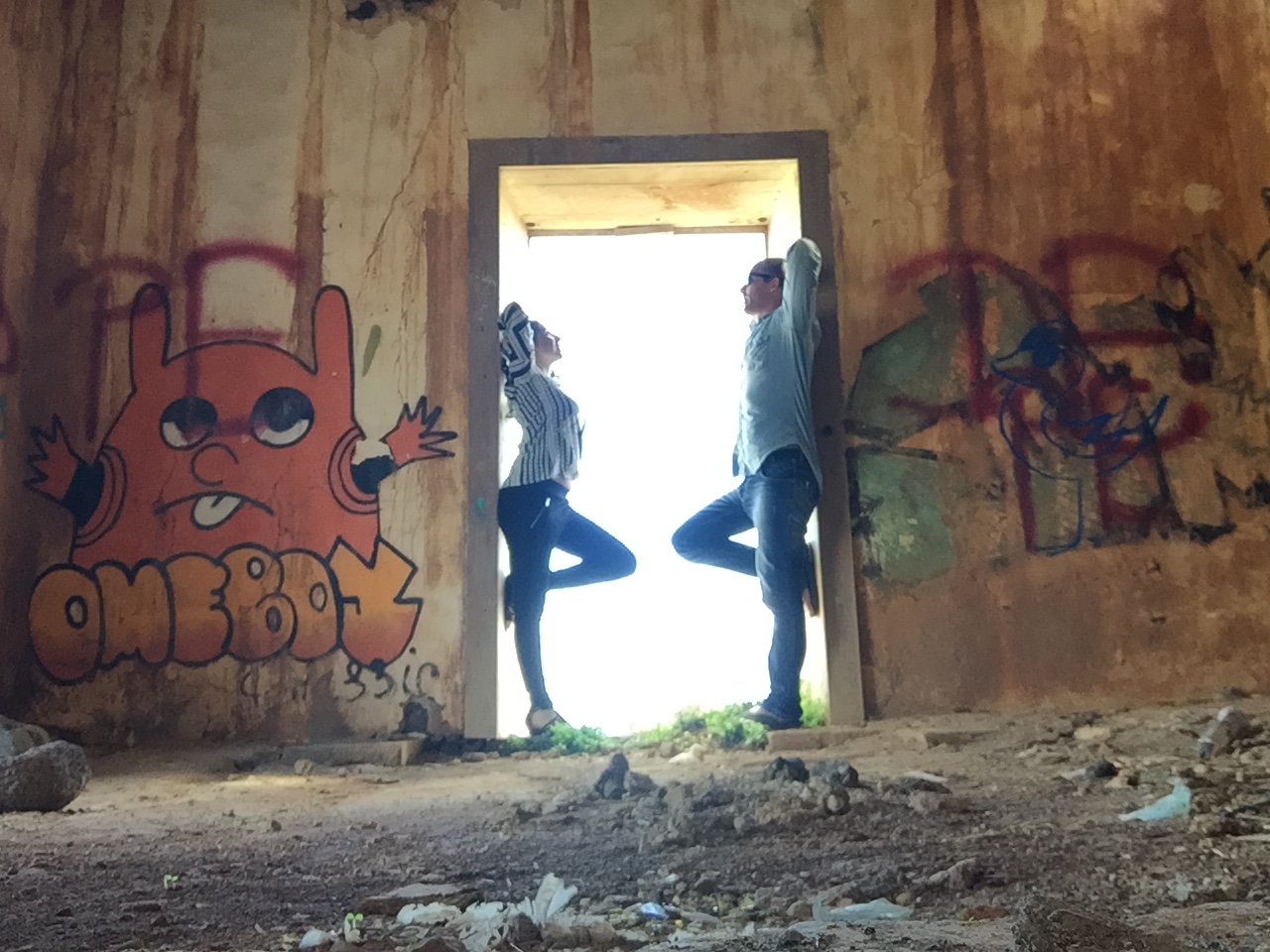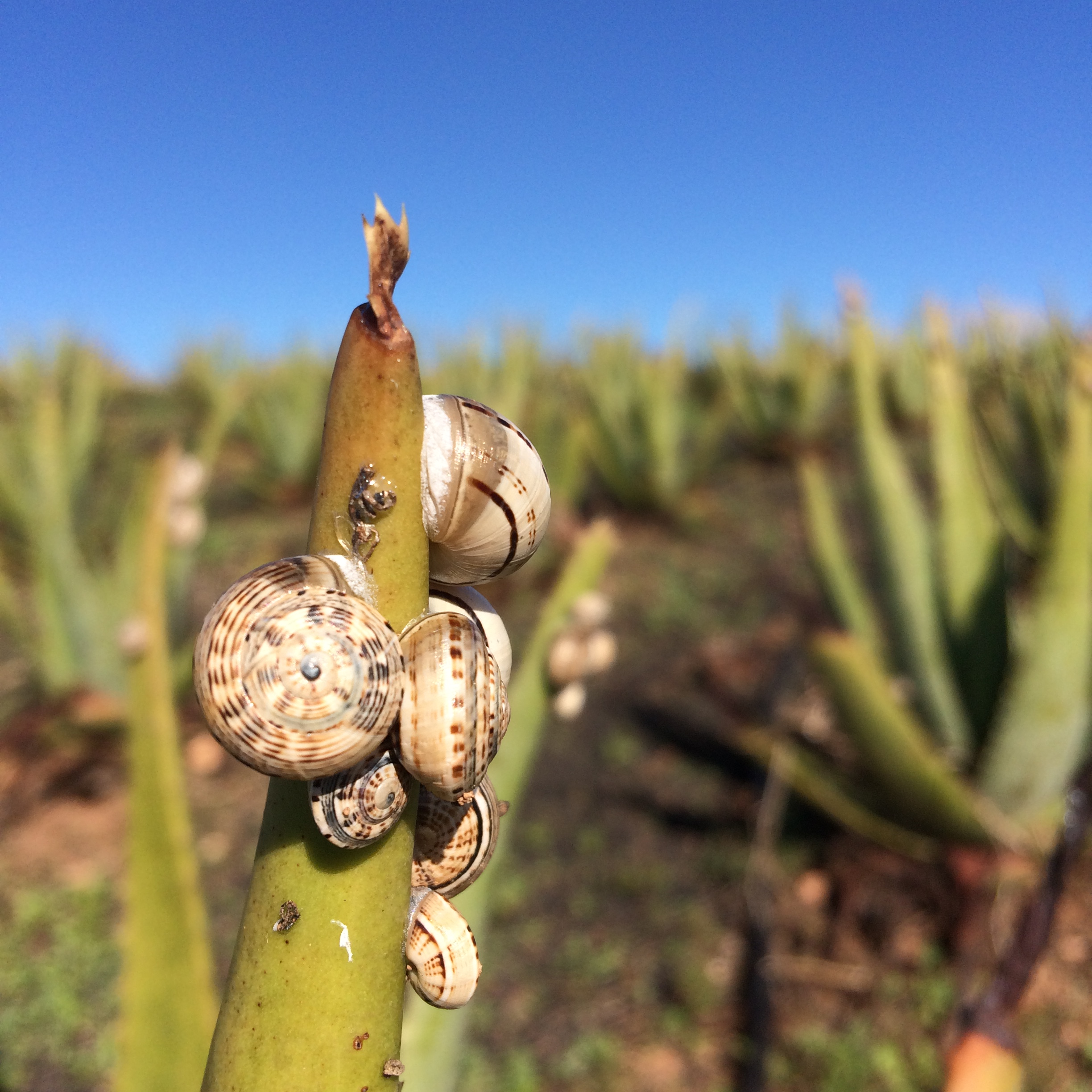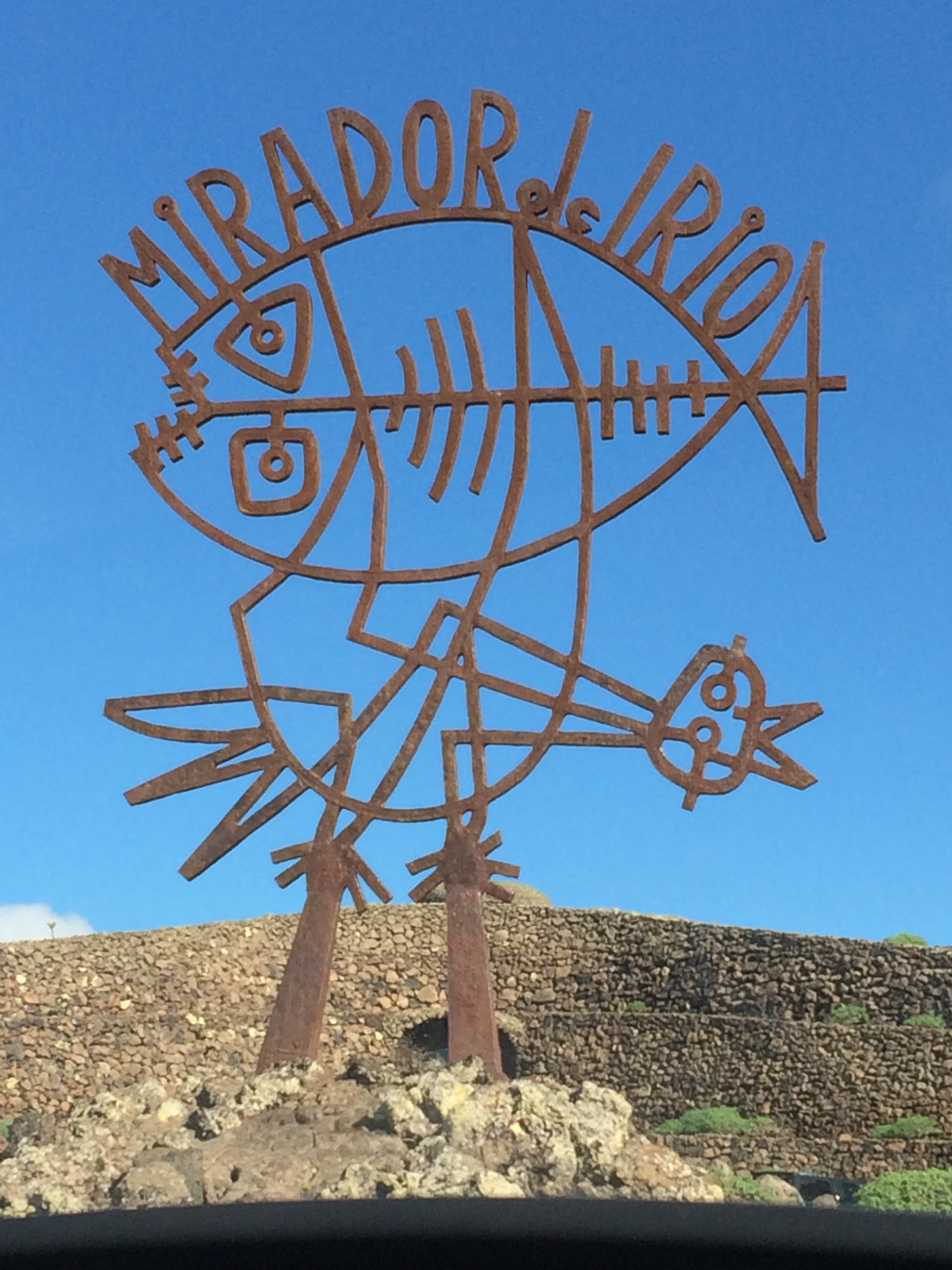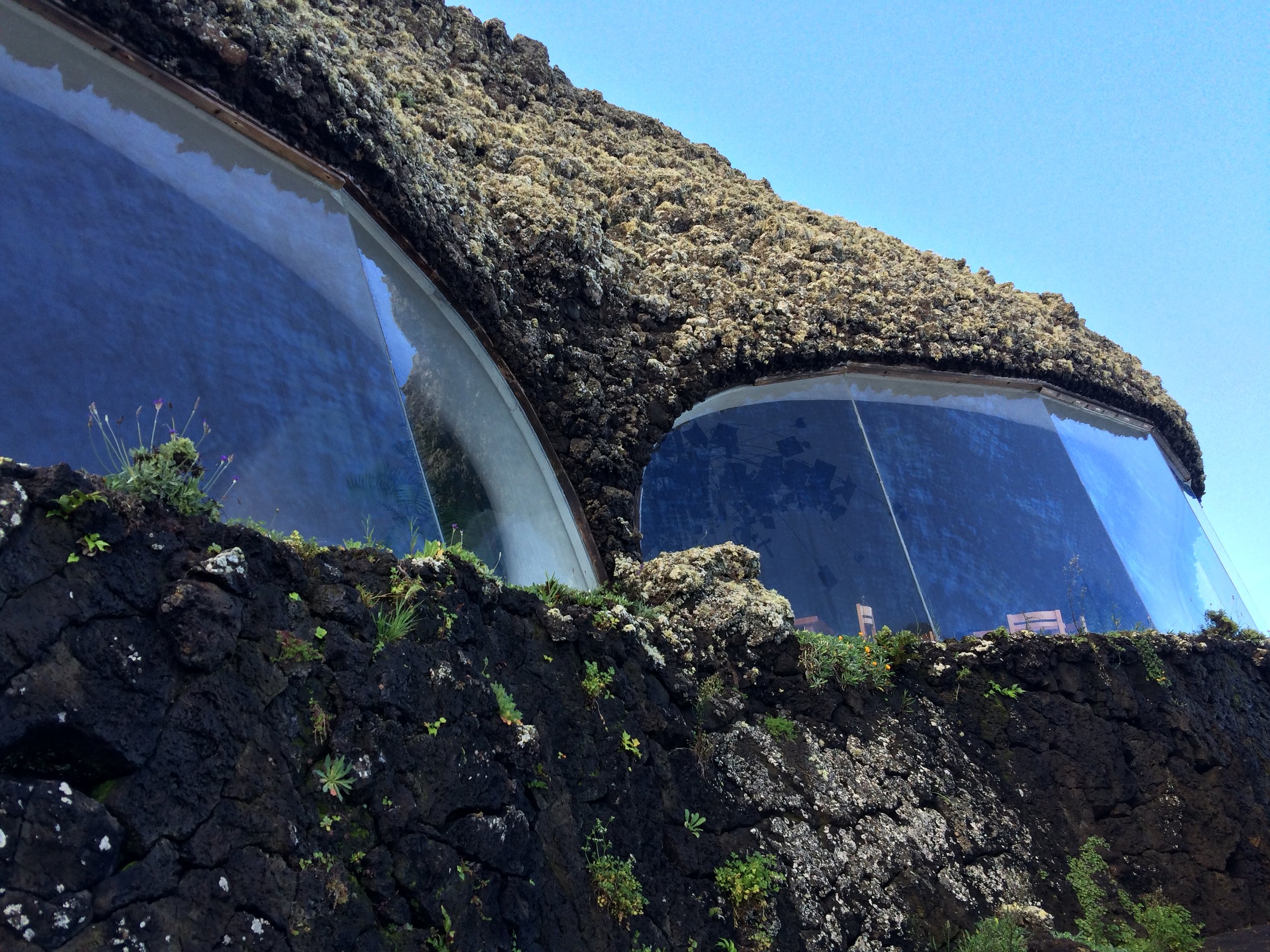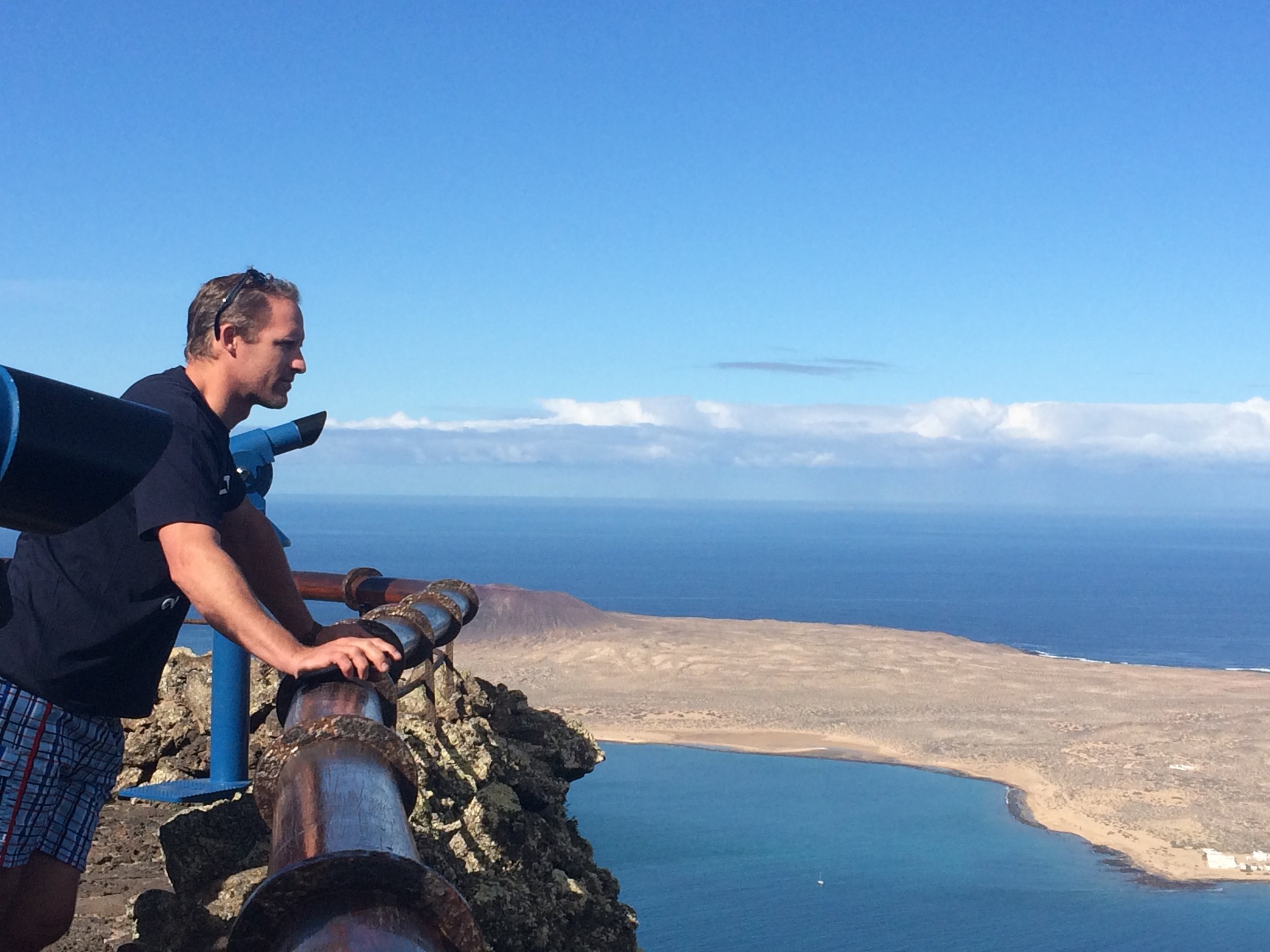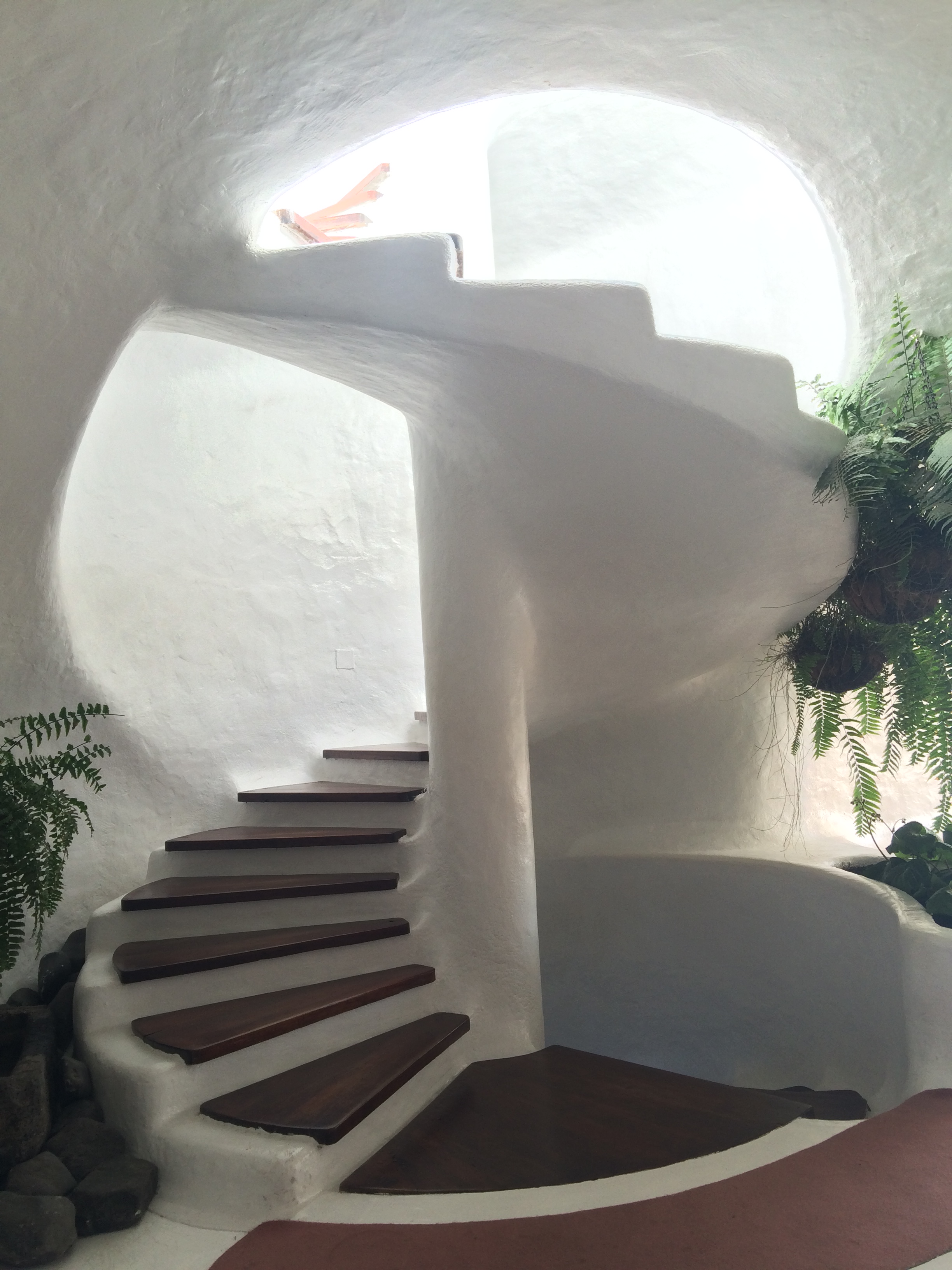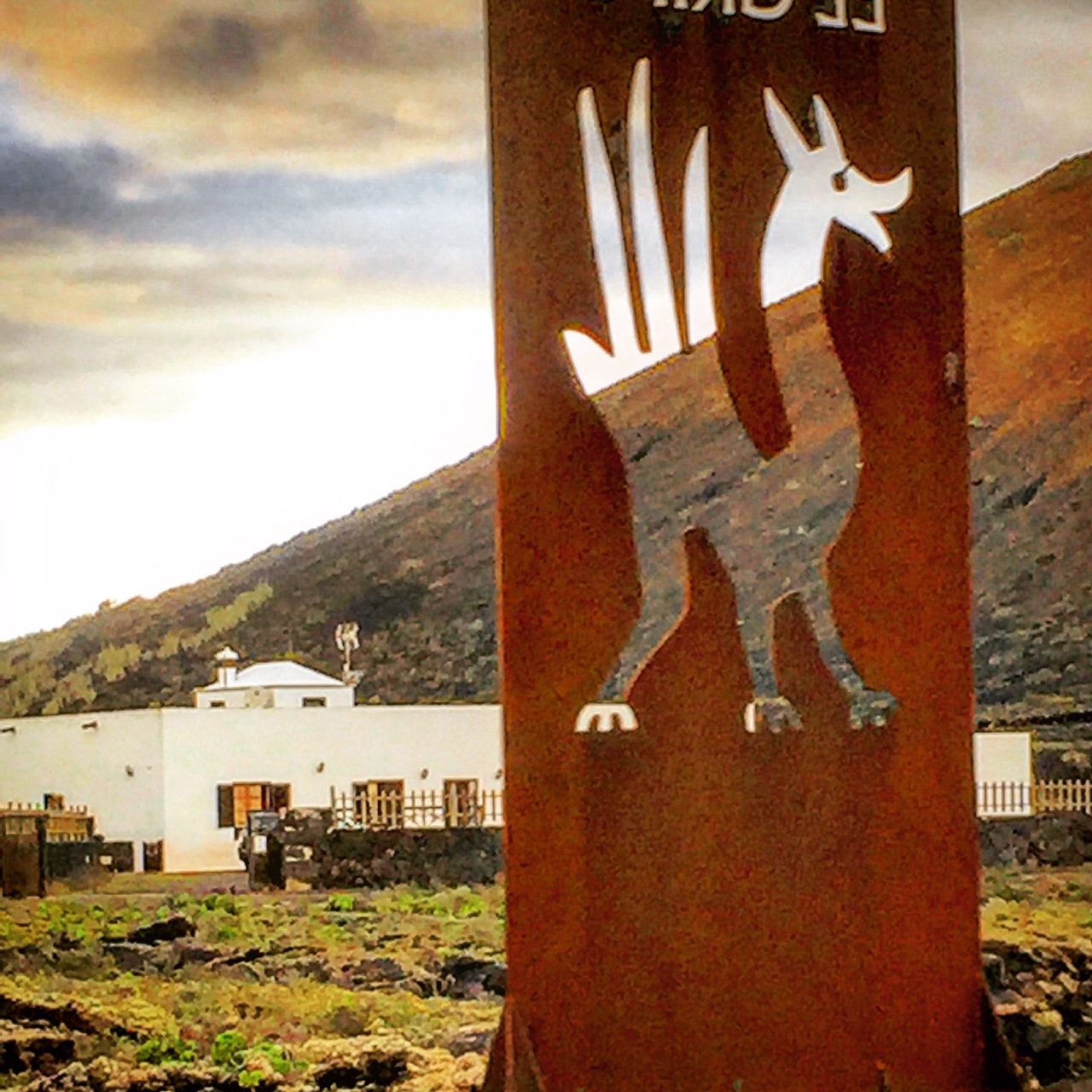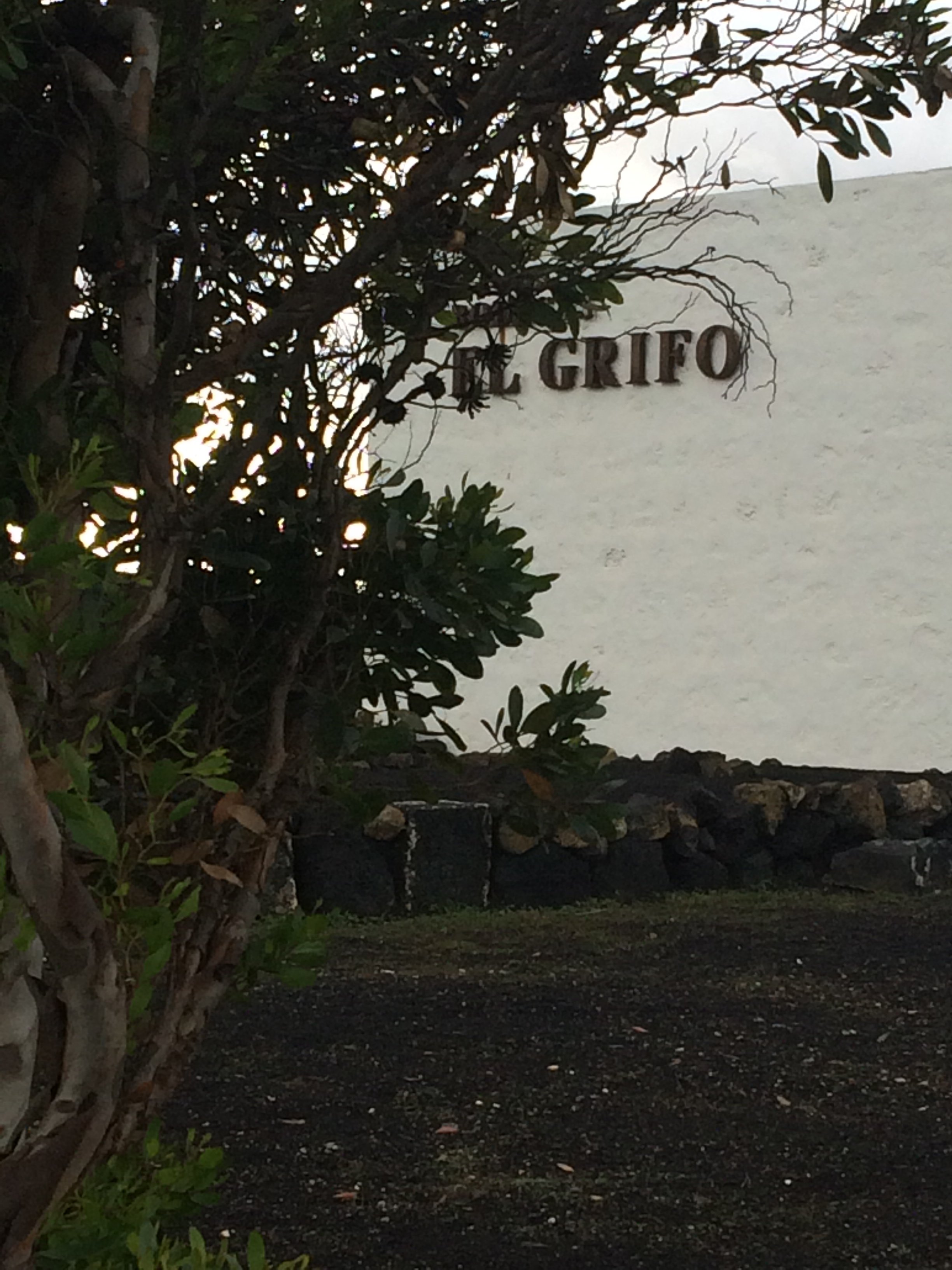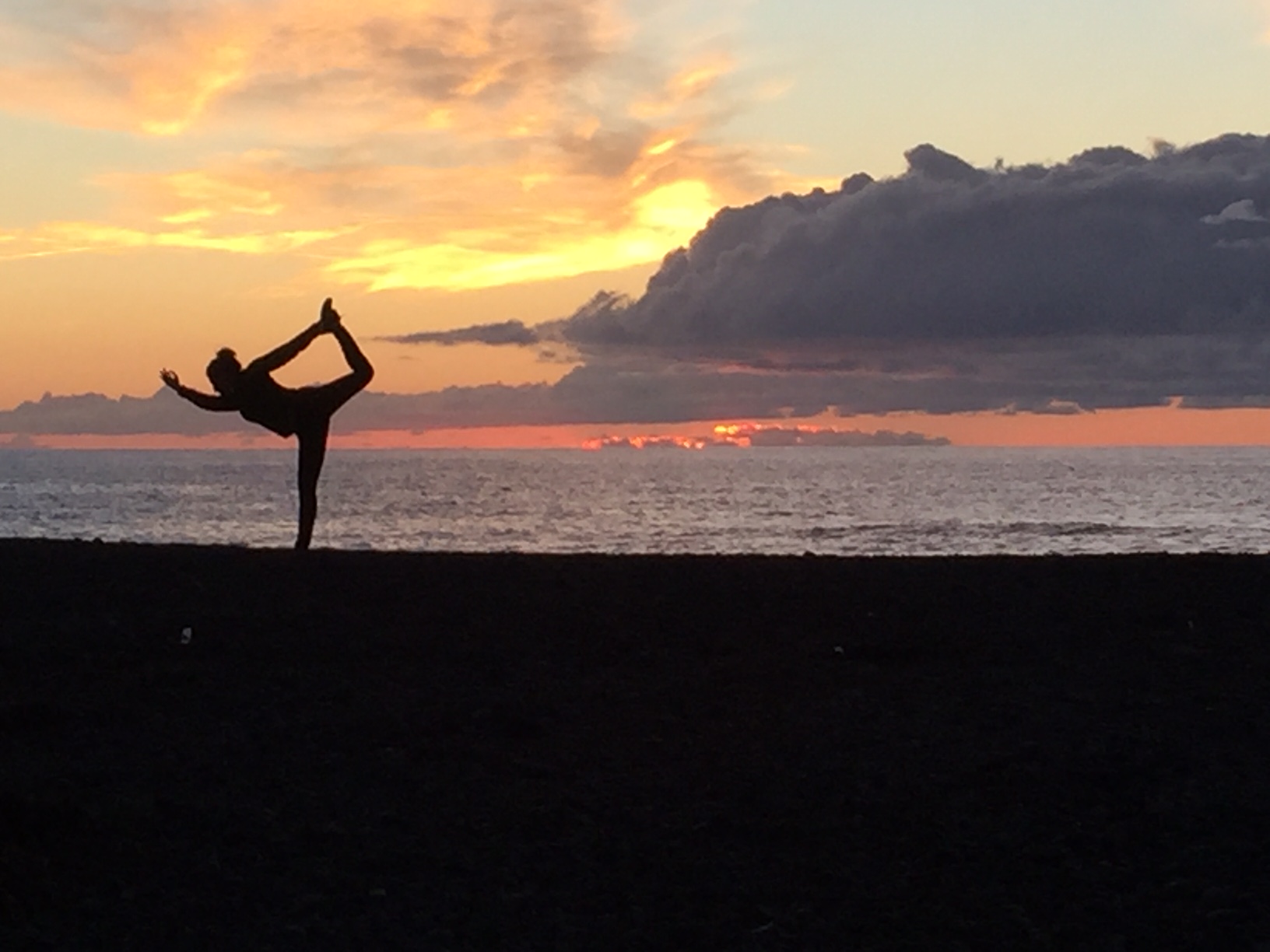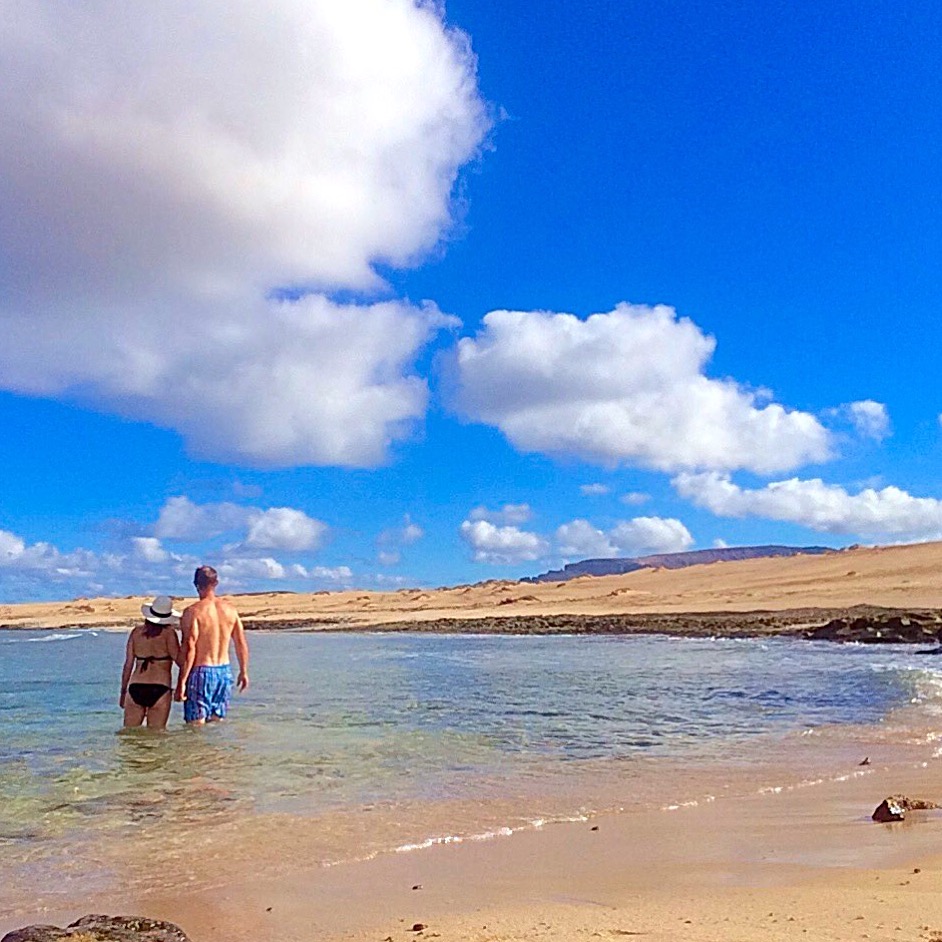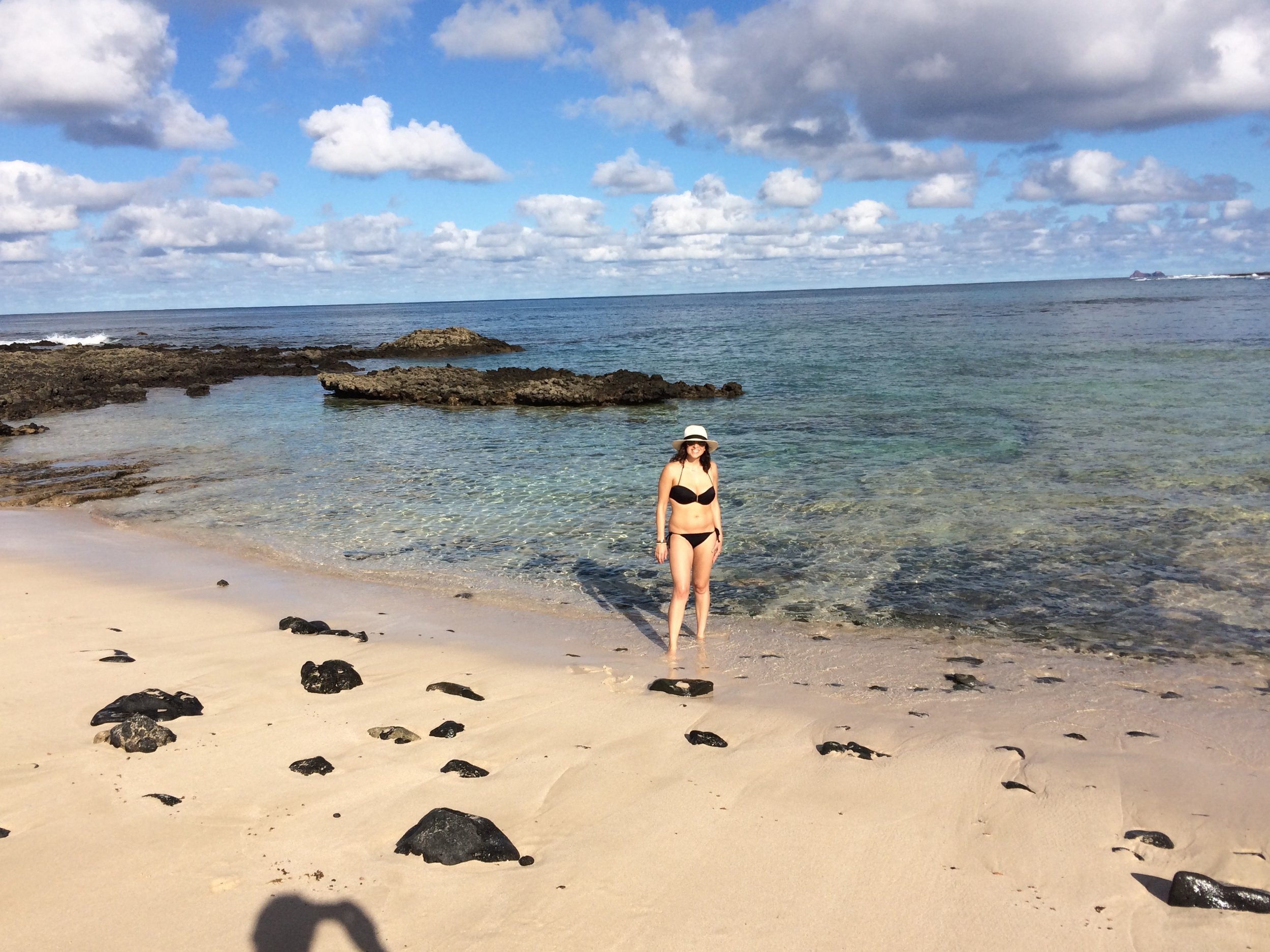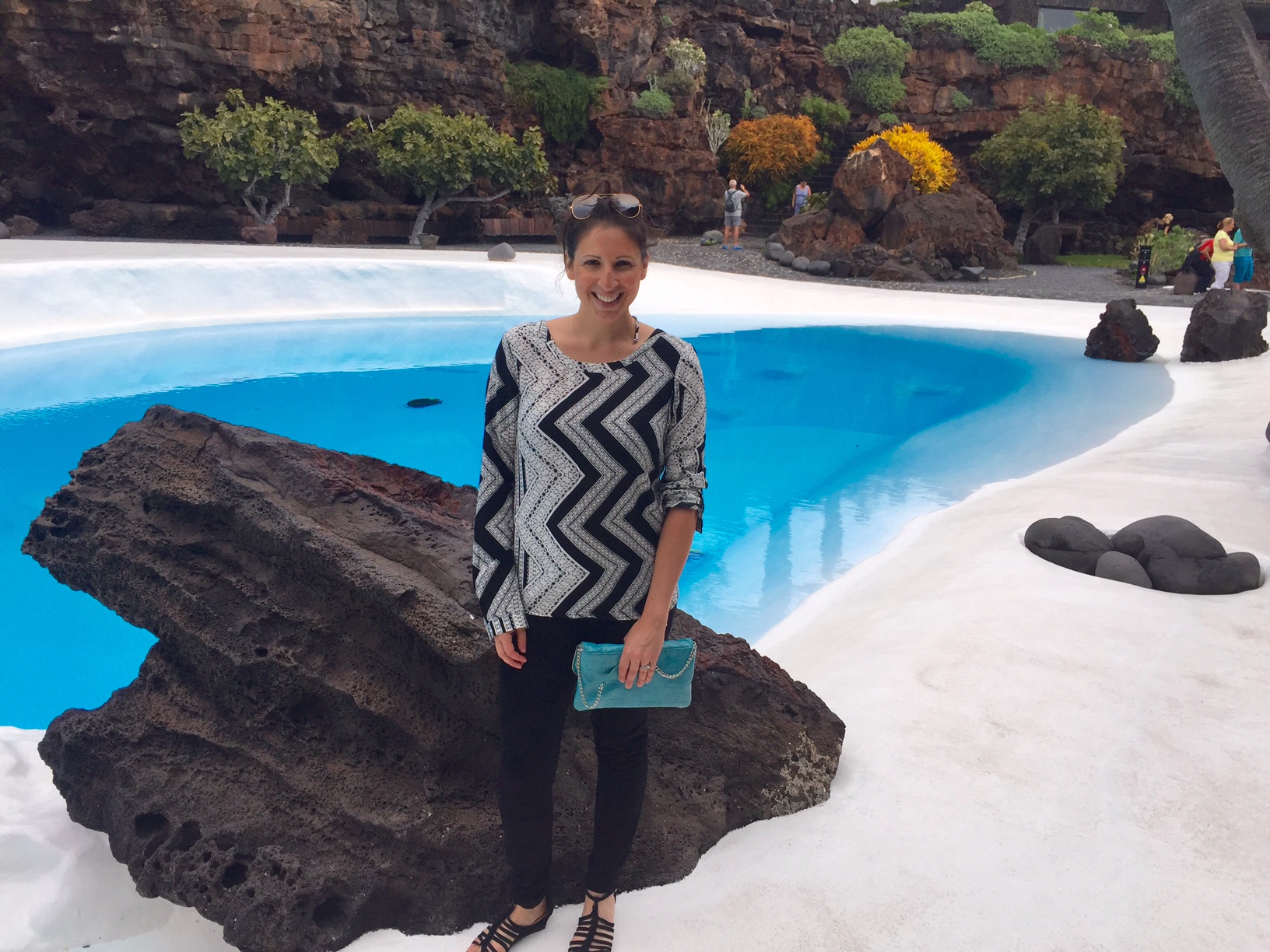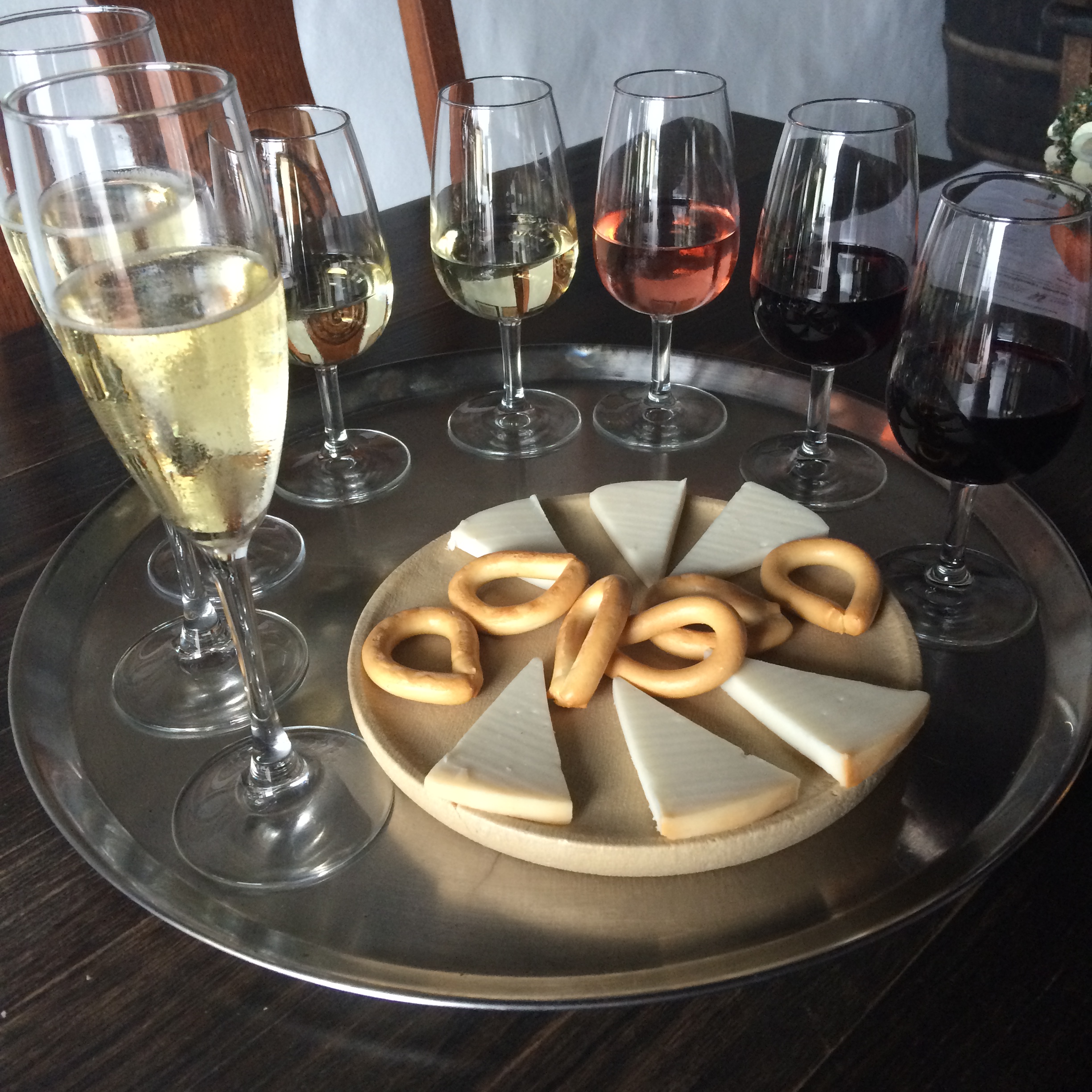There are some places you've dreamed of going all your life. This is not one of those places. Few people in the US have heard of Lanzarote, let alone visited, and I'm beginning to think it's better that way. For us, Lanzarote might as well have been utopia. It's a place where black sand beaches and rugged desert terrain are dotted sparsely with white clay houses, where aloe is harvested by the acre, where wine is grown in lava fields, where many of the beaches are yet untouched, where local public art is celebrated, and where every meal ends with a shot of liquor - a simple thanks for dining. Paradise found.
THE DIGS
When it came to lodging on Lanzarote, we knew we wanted to be close to the beach, and somewhere unique. We considered hotels and Airbnbs, and ultimately settled on glamping. I can just see the headline: Central Oregon couple travels halfway around the world to go glamping. This severely narrowed our options, but what we found took our breath away.
Enter Finca De Arrieta, a luxe eco-lodge in northern Lanzarote, situated beside a beach and not far from the major roads connecting the Island. Our nest included a breezy, open living space and kitchen, and a private bedroom with a mosquito net elegantly draped around the bed. We weren't exactly roughing it. The shower included a bucket to catch as much water as possible, which was then used to water the plants outside our door. In keeping with the conservation efforts, we were asked to save all of our produce scraps for the chickens. Our stay also included airport shuttle service and our very own Toyota Prius for cruising the Island in eco-friendly style.
It's a give and take.
The property was owned and managed by a very kind, very hospitable British family. When Joshua picked us up at the airport and popped a bottle of prosecco for us to enjoy during the 25-minute drive, we knew we'd made the right choice. He gave us a tour of the eco village, powered by the largest green energy system in Lanzarote. Common areas included a solar grill, a life-sized chess board, a sunken trampoline, and perhaps our favorite part, the animals. Resident donkeys were there to pet and feed, and right next door, Cluckingham Palace was open to guests for fresh eggs daily. The retreat was truly off-the-grid, with no wifi save one common area, which was also equipped with honor system sundries and groceries. A small pool and sundeck were open to guests along with a couple of free-to-use surf boards. A five minute walk and we were on an absolutely stunning stretch of beach, and as if that wasn't enough, the beachfront "taco shack" Joshua recommended blew us away. Flanked by sparkling Arrieta beach on one side, and volcanic mountains on the other, we'd found the perfect base camp from which to explore all that Lanzarote had to offer.
If you plan your stay over a Thursday, you'll also enjoy complimentary cava and paella in the common area. Guests may also opt for a number of in-room amenities upon arrival, meal delivery services, massage, and yoga classes. It was an eco-retreat unlike any other.
Breakfast on our patio every morning, including hand-picked eggs from Cluckingham Palace.
THE SIGHTS
There were a handful of places to go, but we started our trip with Jardin de Cactus. It was my husband's birthday and this was his choice. My husband and I met in Tucson, Arizona, home to the great Saguaro cactus and the Sonoran Desert. All the way across the world, this was an incredible way to feel at home. Tucson was also where we fell in love. So while some may find a cactus garden prickly, it gives us all the warm and fuzzies.
Jardin de Cactus was dreamed up by artist and architect Cesar Manrique, the visionary behind the growth of Lanzarote as a tourist destination. His contributions included the restriction of high rise buildings, the white-washing building aesthetic, and various attractions around the Island. Jardin de Cactus is home to over 4,500 plants from 13 families of cactus across five continents. The layout, textures, colors, and the true artistry of it all is astounding. From here, we were inspired to tick off as many of Manrique's other works during our time on Lanzarote. As we'd soon find out, the entire island is his work on a grand scale.
Mirador Del Rio was next on our list. Another Manrique-designed attraction, this watch tower looks out over the Chinijo Archipelago, a series of smaller islands just north of Lanzarote. The outpost was built as a lookout in 1974. Coming up the drive, the building doesn't look like much, camouflaged by lava rock and built into the side of the cliff. But inside, the sprawling space transported us into another time - one that most closely resembles a scene from a James Bond movie. As we moved through the white washed hallways, up the winding staircase, and through the cavernous yet brightly lit rooms, we found ourselves inside of the exhibit, not merely museum spectators. The architecture was set up so that in order to admire it, you had to experience it. From the main room, we looked out of two giant windows, a pair of watchful eyes when viewed from the ocean below, and admired the view of La Graciosa, the only inhabited island in the Chinijo Archipelago. Tomorrow, we decided, we'd go there.
We arrived at La Graciosa via a 25-minute ferry ride. We picked up two mountain bikes and set off on an adventure. Fast forward to bushwacking (the island is extremely arid and made up of dirt and bushes) and me crying out in pain (I was in sandals). This better be worth it, I thought. We rode clear across the 11 mile island, and found what we thought would be a nice place to stop. But the coastline was covered in rocks, not great for sunbathing or swimming. At this point, I was ready to turn around. Why weren't we one of the normal couples content on the beach with a margarita in hand? Steven insisted we keep going, the trail would likely loop around and maybe our private beach was around the bend. Just ahead, he said. Away we rode.
And rode. And rode. While the Island appeared relatively flat from our vantage point at Mirador del Rio, its rugged terrain made for a challenging ride with some major elevation gains, not to mention temperatures in the 80s. When we finally found our private beach, we were both completely exhausted. My feet quiver even now as I write. The trek had taken us a lot longer than expected. But in that moment, on that perfect stretch of beach, I wasn't mad. My feet ached, my skin burned from the sun, but it was worth it.
I could write an entire post on Lago Verde, but I'll keep it concise. Here, we witnessed a sunset unlike anything we'd ever seen before. Lago Verde was the main attraction, or so we thought. The aptly named "Green Lake" is a result of an over abundance of sulfur in the water, but what makes its hue more striking is the backdrop, set against a crumbling volcano on one side and flanked by a black sand beach on the other.
Beautiful as it was, we were much more enamored by the black sand beach and the sunset show that was just getting started. We watched in silent awe as the clouds rolled in, the sun showing off in reds, oranges, and violets as it faded, slowly, purposefully, behind the horizon line of the ocean.
1000 photos later, we'd worked up an appetite and found the old town of El Golfo replete with options.
From fresh rolls with two sauces, served just about everywhere (just as you'd expect bread and butter in the US), to the Canarian potatoes, to the local goat cheese which was incredibly varied and versatile (not a pungent log like we have in the US), we ate incredibly well throughout our trip. The highlight was always the catch of the day, whether a white fish, pulpo (squid) or seafood paella. And that's not to mention the hospitality. We were well taken care of by every server, each one more memorable and kind than the last. On Steven's birthday, our server in a little restaurant in Teguise asked me to write down Steven's age, and she emerged at the end of our meal with dessert topped with birthday candles, plus a bottle of Ron Meil. She poured us each a shot, and then insisted we take home the rest of the mostly full bottle as a birthday present.
That night in El Golfo, we chose a fish restaurant with a patio to take in the last bits of the setting sun. We split a mixed fish plate, papas arrugadas (Canarian potatoes), drank the local wine, and chatted up our server who finished us off with Ron Miel, a local honey rum. Our bellies and hearts were full.
The next day we drove south and got as far as Uga, visiting the wineries built into the rugged, volcanic terrain, which felt more like the moon than a vineyard. At El Grifo, one of the ten oldest wineries in Spain, we walked the vineyards and sampled a wide variety of wines and goat cheese, and made plans to import both when we were back home (we'd later learn, imports from the Canary Islands are very limited, especially outside of major cities like New York). El Grifo's wine equipment dates back to 1775, and their Moscatel vines to the mid-19th century.
We packed a lot into four days on Lanzarote, but we really didn't explore the southern part of the Island. What a shame, I thought, we'd have to come back to do the southern loop. After all there were camels to ride, surf lessons to ace, volcanos to climb, and white sand beaches to sink our well-rested feet into...see what I did there?
Although Lanzarote is best known for its volcanic landscape, to me, its what the people of Lanzarote do with (and around) their land, that's the real story. Whether surfing, sailing, fishing, creating magnificent art, or cultivating crops despite the harsh, arid climate, the people of Lanzarote welcomed us into their world with open arms. I left my heart in Lanzarote, and can't wait to return.
















